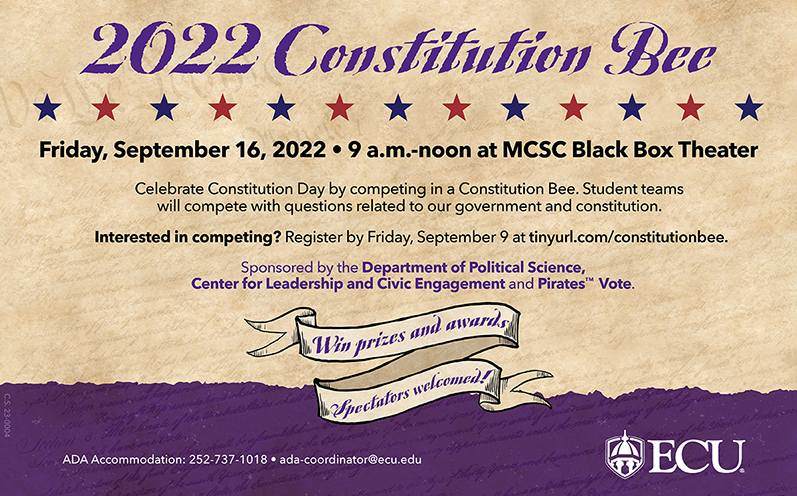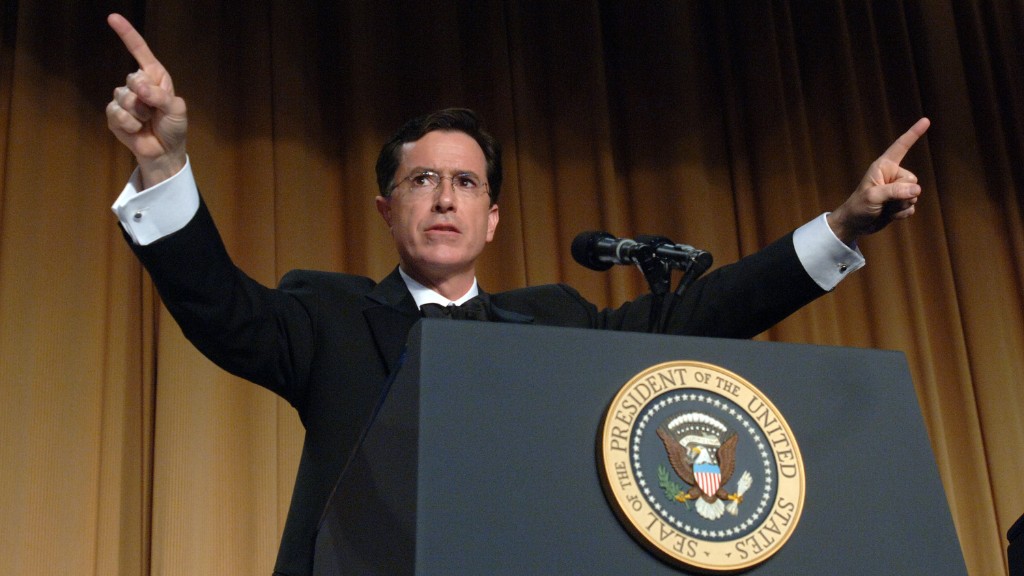All of us in the Dept. of Political Science hope you have a happy, successful, fruitful semester!

All of us in the Dept. of Political Science hope you have a happy, successful, fruitful semester!

Join us for ECU’s 2nd Annual Constitution Bee in the Black Box Theater (student center), Friday, Sept. 16, 2022. Students from John Paul II High School will be facing off against ECU students.
Participate as an individual, sign up with a 3-4 person team, or just come and watch!

Nothing to say – simply a classic! Watch: https://www.youtube.com/watch?v=IJ-a2KeyCAY.

The brief and one-sided Spanish-American War comes to an end when Spain formally agrees to a peace protocol on U.S. terms: the cession of Cuba, Puerto Rico and Manila in the Philippines to the United States pending a final peace treaty.
From History.com. Read more: https://www.history.com/this-day-in-history/armistice-ends-the-spanish-american-war
Here are 9 curious facts you may not be aware of regarding the Constitution:
1. The U.S. Constitution is the shortest national constitution in the world at 4,400 words.
2. Over 11,000 amendments to the Constitution have been proposed, only 27 have been ratified.
3. Benjamin Franklin was the oldest signer of the constitution at 81. He died at age 84.
4. George Washington initially proposed a ‘day of thanks’ or Thanksgiving Day as a way to honor the Constitution.
5. While drafting, the Constitution included a clause that would abolish slavery 20 years after its implementation.
6. Only 12 of the 13 colonies were present during the drafting of the Constitution. Rhode Island did not want to participate and was the last to sign on May 29, 1790.
7. Independence Hall, where the Constitution was signed, is also where the Declaration of Independence and Articles of Confederation were signed several years earlier.
8. The iconic first words of the Constitution, ‘We the people of the United States,’ originally listed each individual state from north to south instead of ‘the United States.’
9. Gouverneur Morris, a delegate from Pennsylvania is usually credited as the ‘Penman of the Constitution.’ Actually, a man named Jacob Shallus – assistant clerk of the Pennsylvania State Assembly – penned most of the document.
From https://ivn.us/2014/09/17/little-known-facts-about-the-us-constitution-for-constitution-day/
This clip, from the fall of 2008, is one of the 6 skits “Saturday Night Live” aired which featured Tina Fey imitating Republican VP candidate Sarah Palin.
Watch here: https://www.youtube.com/watch?v=8HsyEvr5Pnw
FYI: Don’t ever think it’s easy to find non-partisan jokes about politics! Enjoy…
I just saved a ton of money on my Christmas shopping by expressing my political views on facebook.
If Donald Trump runs for president in 2024 I’m leaving the country (not a political post – I just love to travel!)
Good thing I don’t see any political posts on my news feed
*In fact, my Myspace friends haven’t really posted much since 2010
I won first place in a political correctness competition the weekend…
*Though to be fair, so did everyone else
Why did the political theory class think their teacher was being unfair?
*He gave the whole class the same Marx
Among all the politically incorrect jokes on this sub, here’s my favorite:
*Benjamin Franklin was a great American President
You know the problem with political jokes?
*Sometimes they get elected
I told my friend that I never knew that Rage Against the Machine was so political, and that it really ruined the music for me.
*He looked at me deadpan and asked, “What machine did you think they were raging against, the dishwasher?

On the afternoon of August 3, 1914, two days after declaring war on Russia, Germany declares war on France, moving ahead with a long-held strategy, conceived by the former chief of staff of the German army, Alfred von Schlieffen, for a two-front war against France and Russia. Hours later, France makes its own declaration of war against Germany, readying its troops to move into the provinces of Alsace and Lorraine, which it had forfeited to Germany in the settlement that ended the Franco-Prussian War in 1871.
Dr. Baumgartner has a forthcoming article in Presidential Studies Quarterly on “Public Support for Vice Presidential Reform.”
Abstract: This analysis explores public support for reforming both the selection of vice presidents and institution itself. Survey data shows some evidence that those who favorably view the concepts of political moderation and bipartisanship support vice presidential reform, while partisans and ideologues (broadly defined) seem to oppose it. In addition, there is a negative association between job approval ratings for Vice President Mike Pence and support for vice presidential reform. The only demographic factor that was significant in the analysis was gender, with females more likely than males to support reform.
There will be no new postings on the Political Science blog until August 1, 2022: I will be on vacation. Enjoy the rest of the month!
